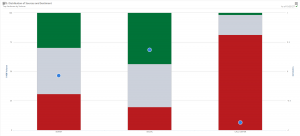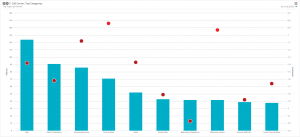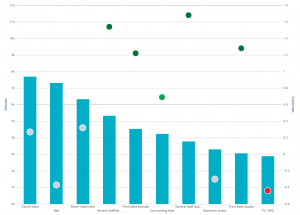Did you know that 95% of customer feedback in the world is ignored by brands? Considering that Forrester calls this the “Age of the Customer,” that statistic should shock you and make you think. It should also make you act.
The first step to remedying this problem is to focus on what customer feedback your organization has and what feedback it can easily gather. Then, you need to find a way to evaluate all that feedback fully. To understand why this is important, let’s consider a large hotel chain, which we’ll call Hotel X.
Hotel X was like most businesses: They were conducting regular post-purchase (or in this case, post-stay) surveys. These surveys were telling the hotel that, while it had some areas for improvement, not a lot of changes to the customer experience were needed. Most of their survey replies were a 4 or 5 out of 5.
Hotel X then took the time to peel back the layers of customer feedback and look at the comments customers left on the surveys. From there, they were able to determine that the bed not only had the greatest volume of feedback, but also produced the most negative feedback. This was due in part to the pillows and in part to the sheets and the mattress (as seen in the word cloud below). Keep in mind that beds are hard to change in hotels, but sheets and pillows are easy to adjust.
This is important feedback to consider. If Hotel X had stopped with their survey feedback and not added in social and call center feedback, they would have missed a large part of the customer experience picture.
Contrary to popular belief (and as seen in the chart below), social feedback data generally skews relatively positively. While countless experts like to talk about the effects of individual viral negative social comments, the reality is that most people don’t want to be seen as whiners. So across most social platforms — especially those where their reputation matters — customers don’t complain as much as you think.
Social data can help you understand what you are doing right so that you can keep doing it.
If you look at call center data in the chart above, on the other hand, it unsurprisingly skews negative. Most people are busy and busy people don’t call a call center unless they have an issue. That’s why call center data is useful in helping you understand what you are doing poorly.
But on the flipside, if you only listen to this negative voice, you may spend time fixing things that aren’t broken for your ideal customer.
By weaving in these additional sources of feedback, Hotel X learned some additional drivers of loyalty. Social data, for instance, highlighted the importance of the cost and value of the room (as seen in the chart below).
Meanwhile, call center data pointed to overall room cleanliness as a key driver.
Of course, it wasn’t until Hotel X combined all of this intel (as seen below) that they got a true understanding of where to focus their efforts. The hotel noticed that cost/value was the most talked about subject. Most of the complaints were about being charged the wrong amount or the hidden charges in the room, like being charged for the safe.
The lesson here is clear: You can’t look at one source of information and uncover the truth. By looking at just one source, your view is skewed at best … and likely wasteful to boot.
Your challenge is to be one of those leading brands that actually works to understand the complete picture. This can be done with three simple steps:
1. Listen to all customer feedback. This includes the data from structured survey questions, open ended survey questions, social and call center data.
2. Slice and dice the data in different ways to understand what is actionable.
3. Help your organization activate the data by being the voice of the customer.
Only with this approach can you truly get the most out of your customer feedback.









Good article, Susan. I haven’t heard the stat that “95% of customer feedback is ignored by brands” before. Just wondering where you sourced that from? Thanks.